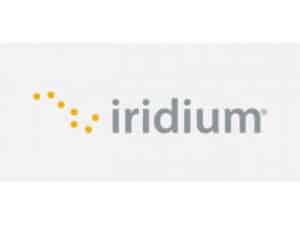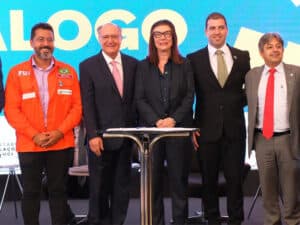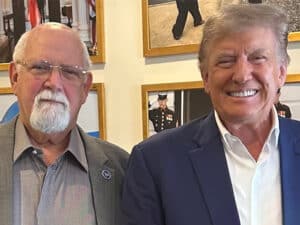
Landmark containership engine completes trials
Written by Nick Blenkey JULY 27, 2012 — MAN Diesel & Turbo’s first super-long-stroke, 90-cm bore Mk 9 engine has successfully completed test bed trials at Hyundai Heavy Industries Engine & Machinery Division in Korea. The S90ME-C9.2 meets the new containership design demand for smaller bore, super-long-stroke engines with lower propeller speeds.
JULY 27, 2012 — MAN Diesel & Turbo’s first super-long-stroke, 90-cm bore Mk 9 engine has successfully completed test bed trials at Hyundai Heavy Industries Engine & Machinery Division in Korea. The S90ME-C9.2 meets the new containership design demand for smaller bore, super-long-stroke engines with lower propeller speeds.
Physically, the engine is the largest two-stroke engine ever designed by MAN Diesel & Turbo. It will deliver a massive torque of 8.5 million Nm at 84 rpm and has a total output of 69,720 kW and will be installed in a container vessel built at Samsung Heavy Industries Geoje shipyard for Orient Overseas Container Line (OOCL).
Since the beginning of the global economical crisis in late 2008, shipowners have been investigating possibilities for reducing operating costs, through such measures as low-load optimization of engines, slow steaming and operation with turbocharger cut-out. These trends led MAN Diesel & Turbo to offer possibilities supporting optimized propulsion efficiency by way of lower propeller speeds by using longer-stroke engine designs.
This, in combination with the need to meet the newly introduced Energy Efficiency Design Index, EEDI, made MAN Diesel & Turbo develop the MAN B&W super-long-stroke S90ME-C9.2. Developed specifically for containerships, the S90ME-C9.2 is based on the VLCC-optimized S90ME-C8, which in the meantime has also found applications in a number of container ships.
The G series of engines, with even larger stroke to bore ratios, has been made available, with G40, G45, G50, G60, G70, and G80 type engines supporting the trend to lower propeller speeds with a super-long stroke for all ocean-going ship types.
In addition to the basic optimiz aation of the propulsion plant for container ship operation, by using the low propeller speed supported by the S90ME-C9.2 engine, the engine is delivered with the following three different MCR optimizations:
- High-rated MCR with part load optimization
- De-rated MCR optimization with part-load tuning
- De-rated MCR optimization with low-load tuning
The rebuilding and parameter set-up changes necessary for switching between particularly MCR points 2 and 3, and thereby ensuring optimum operation conditions for relevant trade patterns, are minimal.
(Above) Expected SFOC curves for the different MCR configurations

(Above) Layout diagram for S90ME-C9





Leave a Reply
You must be logged in to post a comment.